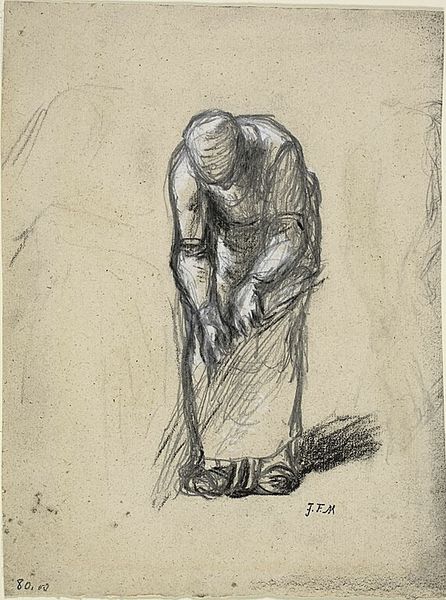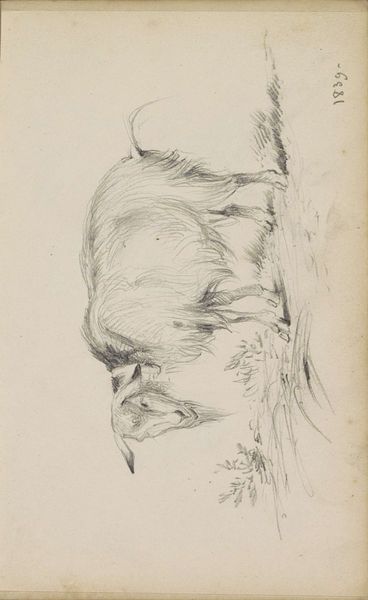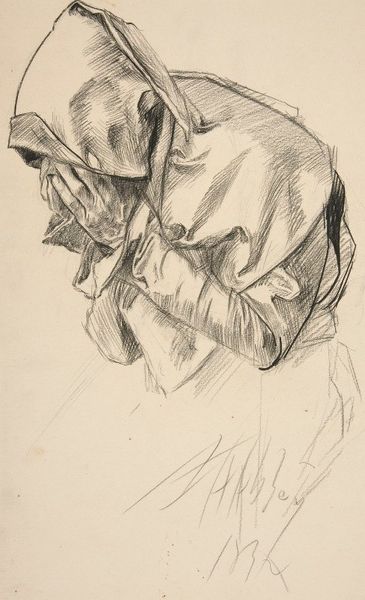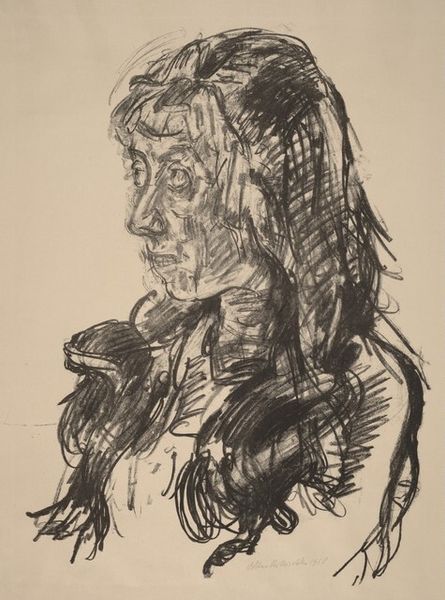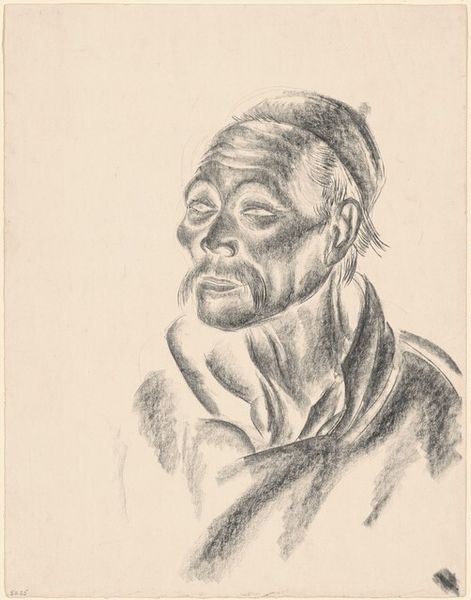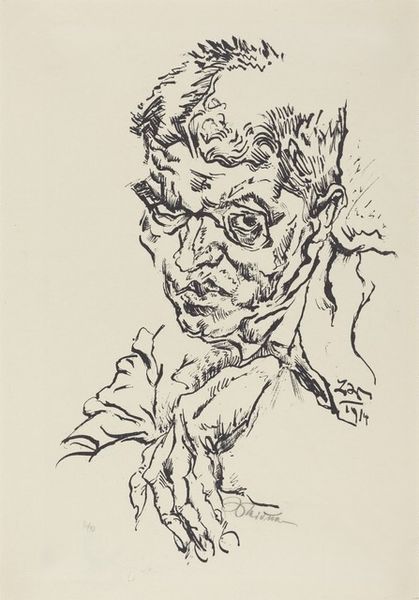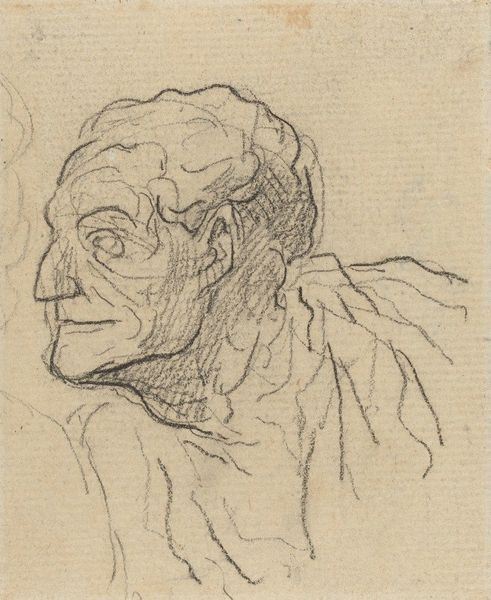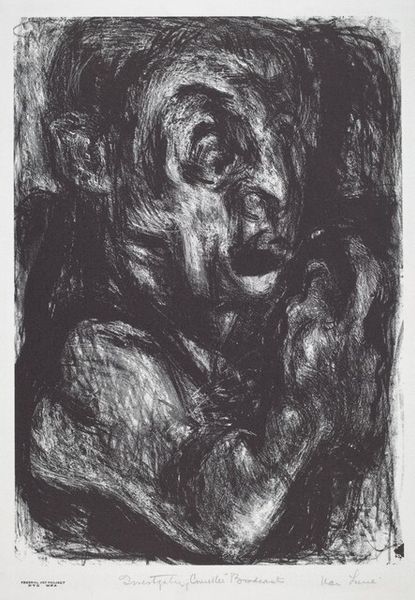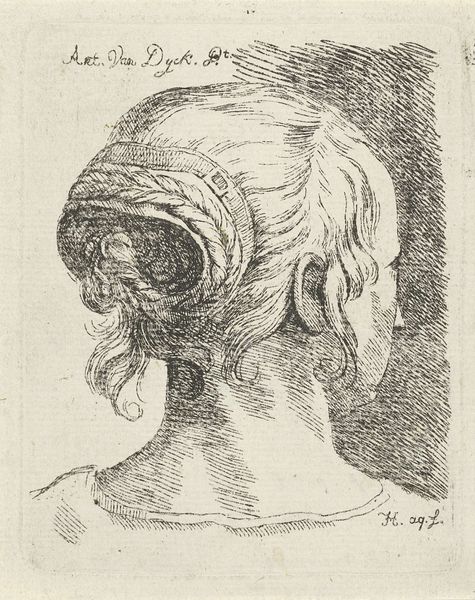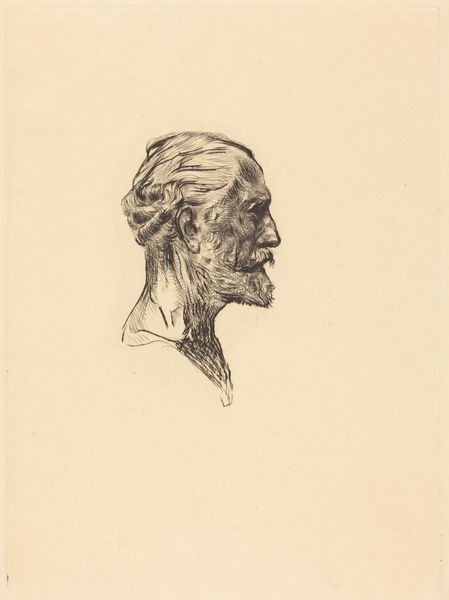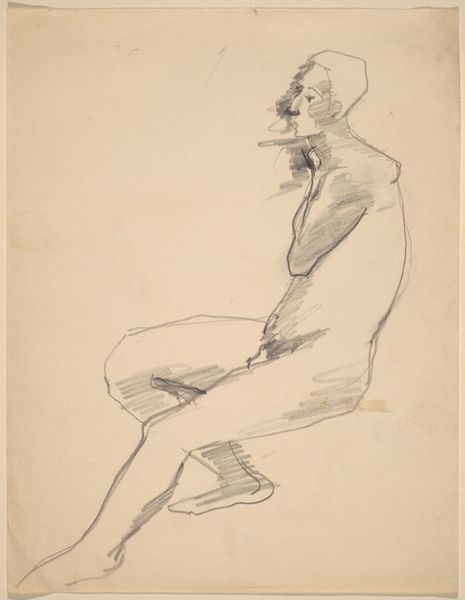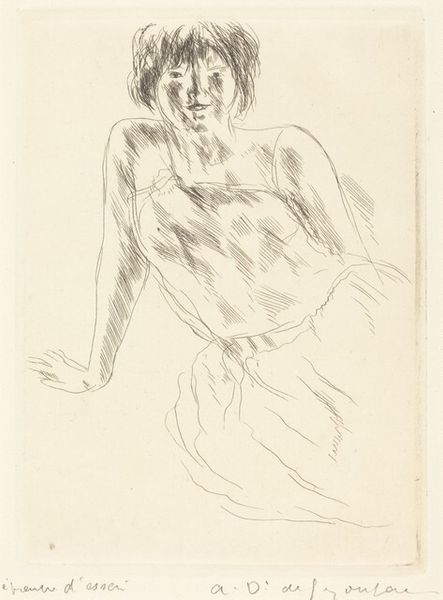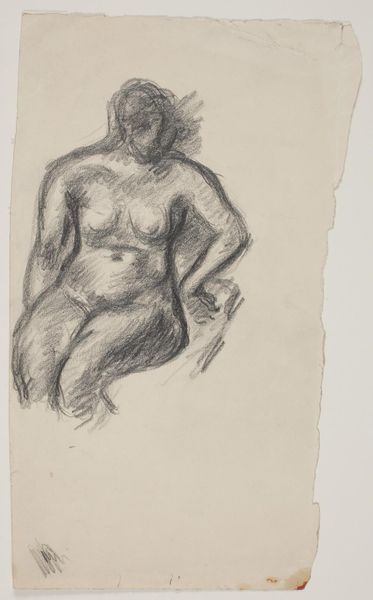
drawing, pencil, graphite
#
portrait
#
pencil drawn
#
drawing
#
pencil sketch
#
figuration
#
pencil drawing
#
pencil
#
graphite
#
portrait drawing
#
academic-art
Dimensions: 13 15/16 x 11in. (35.4 x 27.9cm)
Copyright: No Copyright - United States
Curator: This is "Chieftain," a pencil and graphite drawing by Myer Abel, likely created sometime between 1919 and 1948. It’s now part of the collection here at the Minneapolis Institute of Art. What are your initial impressions? Editor: It's immediately striking – the raw energy of the marks, the intense focus on the face. The heavy shading gives the figure such a strong presence, a kind of monumentality in a small drawing. Curator: Abel was deeply engaged in social justice issues, particularly concerning marginalized communities. He used his art as a form of advocacy. I think this drawing captures some of that sentiment. Editor: Absolutely. The way he exaggerates the facial features, the deep lines etched into the skin – there's a weight of history there. Though I can't help but feel a little conflicted. Curator: How so? Editor: There is a fine line here between representation and... well, something less respectful. The title, the accentuated features—one wonders about the artist's intentions in depicting the figure with such unflinching directness. Curator: Precisely. This gets at the core of how we interpret art historically. Abel lived during a time of great social upheaval, and his work reflects the tensions and biases that existed then. To look at this today, we have to acknowledge that complex history. Editor: True. Yet, on a purely technical level, the layering of the graphite creates amazing depth, an almost sculptural quality. The detail in the eyes brings the subject to life in a powerful way. It's not just a likeness; it's an emotional landscape mapped onto a face. Curator: That artistic skill gives the portrait enduring impact. Despite its historical context, its craftsmanship demands attention and encourages us to contemplate both its subject and our own biases. Editor: Ultimately, "Chieftain" feels like more than just a portrait. It's a challenge, an invitation to consider our role in the ongoing discourse surrounding identity, representation, and power. Curator: I concur, and in that sense, the work remains as relevant now as it was nearly a century ago, prompting essential, and at times uncomfortable, conversations.
Comments
No comments
Be the first to comment and join the conversation on the ultimate creative platform.
